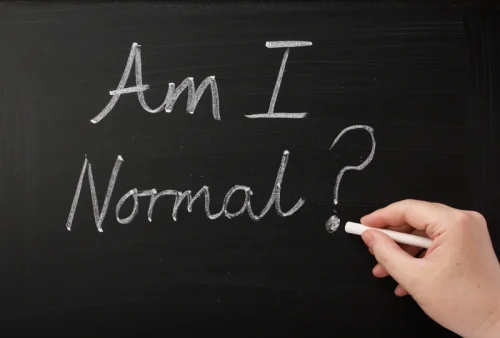How to Stop Drinking: 14 Tips for Success

Our online video programmes allow you to stop when you want and where you want. It is not a seminar, neither is it a recording of one, but a standalone programme in its own right. Unlike our centre seminars you will not be able to speak directly with an Allen Carr’s Easyway therapist. The health of your business depends on the health of your employee population. A healthier, happier, more contented workforce creates a more productive workplace environment and a great return on investment. Well, we’re so confident of the method that we offer a full money back guarantee.

How to stop drinking alcohol: Tips for quitting, support, and more
It’s how you’ll decide whether a spiritually-based support group is important why cant i control my drinking to your success or not a good fit for your needs. The Recovery Village is focused on lifelong wellness, respectful and compassionate treatment provision, and long-term recovery. The company holds the value that anyone can recover and that treatment should address both physical and psychological concerns. Self Recovery has the aim that everyone can achieve deep and lasting change in their choices and beliefs.
Compare the Best Programs to Quit Drinking
The groups that operate within the framework welcome anyone looking to find a path to sobriety, including those who are religious. The program operates under the framework of a 12-step program that is rooted in spirituality. Principles include the belief that individuals are not able to solve their addiction on their own and need the help of a power greater than themselves.

Timeline for Quitting Alcohol
- Individual circumstances lead to decisions about whether residential treatment is appropriate or if an app to connect with care will do.
- When we are stressed or unhappy it is easy to turn to alcohol as a source of comfort.
- You might run into obstacles along the way that tempt you to drink.
- Gradually reducing the amount of alcohol you drink can help give your body the time it needs to adjust to the lack of alcohol.
When you’re having a good time, you find it hard to stop, especially in the company of friends having the same amount. If there are any people who encourage you to drink too much, try to avoid them for the first month or so while you get used to your new style of drinking. If you are constantly surrounded by peer pressure to drink, start seeking out new friends or family members who don’t drink as much. For example, every evening (or the following morning, if you forget), write down how many drinks you drank, where you were, and with whom. Medical experts now use the term “alcohol use disorder” rather than “alcohol abuse” to address the concern of excessive drinking. Mainstream advice recommends cutting down gradually to control your alcohol intake.

Many people, including some medical professionals, believe that abstinence is the only way. But medical research has shown that the cold-turkey approach may not be the best way for everyone. Laying it all out in black and white can take time and some serious self-examination. Understanding your habits and your motivations to quit drinking can help you understand the change you’re making in your life and reinforce why it’s important.
- If you’re living with alcohol use disorder (also known as alcoholism), you’ll likely benefit from additional medical interventions.
- People with alcohol use disorder can’t stop drinking even when it causes problems, like emotional distress or physical harm to themselves or others.
- Knowing why you drink is essential, says Cyndi Turner, LCSW, LSATP, MAC, a Virginia therapist specializing in addiction treatment and alcohol moderation.
When we are stressed or unhappy it is easy to turn to alcohol as a source of comfort. She enjoys interviewing medical experts and researchers about their work and is passionate about communicating accurate and relevant health information to the public. A standard glass of wine is 5 ounces, which contains about 12% alcohol. A shot of distilled spirits like vodka is 1.5 ounces and equally 40% alcohol. One 12-ounce can of beer contains about 5% alcohol, and a standard glass of sherry is 3 to 4 ounces and contains about 17% alcohol, according to the NIAAA.

Avoid loneliness.
- Customers have mixed opinions about the writing style of the book.
- It may even help if you spend time with other nondrinkers for a while so you can support each other.
- They can monitor your intake and adjust it accordingly to reduce the risk of withdrawal symptoms.
- If you’re addicted to alcohol, the first days of quitting can be difficult.
The program also takes into account life stressors such as busy schedules, family obligations, financial problems, and judgment from others. The network accepts and respects any path that is chosen toward sobriety and is not opposed to or in competition with programs offered through other networks (such as Alcoholics Anonymous). Rather, any path to sobriety that the individual chooses is respected in this model.
- Women for Sobriety is a nonprofit organization founded in 1975 to help women overcome substance abuse.
- For people who moderately consume alcohol, tapering off may be a good option.
- Drink a cup of soothing tea or a tall glass of water before you imbibe—once your thirst is quenched, you may not feel the need for as much—or any—alcohol.
- Of course not, in fact – most people who stop drinking with Allen Carr’s Easyway do so without any unpleasantness at all.
Alcohol withdrawal symptoms are more likely in heavy drinkers. Withdrawal usually begins 6 to 8 hours after the last drink and peaks within 72 hours. Alcohol is the third-leading preventable cause of mortality in the United States, with approximately 95,000 people dying from alcohol-related causes each year. By gradually tapering off alcohol, you can lower your risk for alcohol-related accidents or death.




